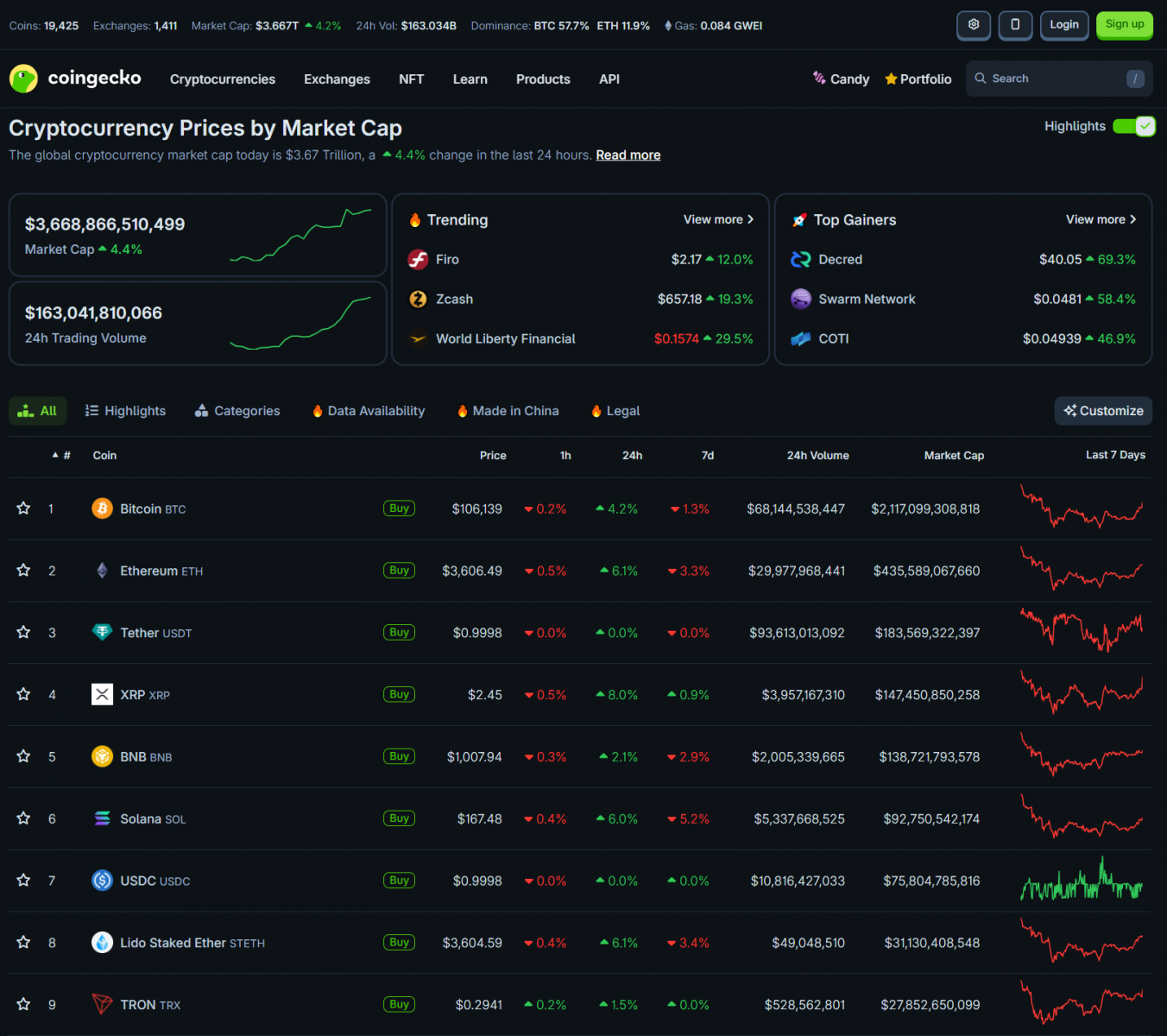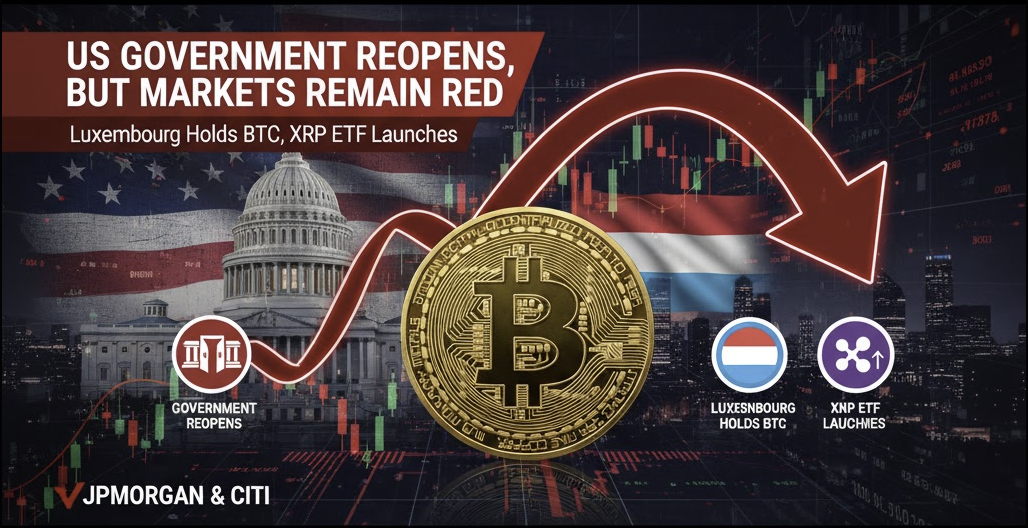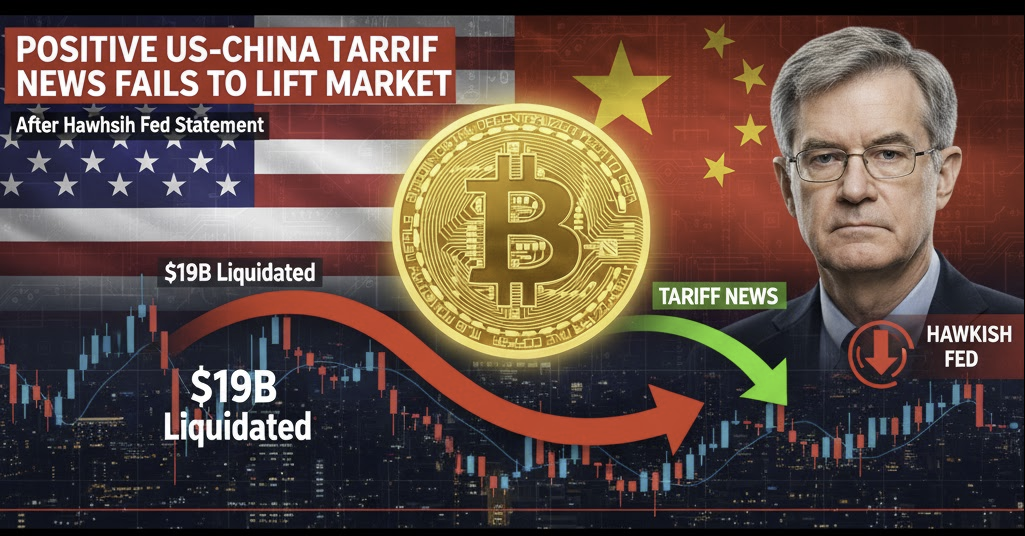US stock futures and crypto saw a slight uptrend after receiving positive news regarding the US government's potential reopening. Concurrently, the Fed hinted at the possibility of injecting liquidity into the market soon.
Market Overview
Stock and Commodity Markets
US stock futures for Sunday (November 9th, US) saw a slight recovery following positive signals about the government potentially reopening. All indices saw gains, with Nasdaq futures rising the most at 0.87%. Oil also rose to $60.25 per barrel. Gold saw a slight increase to $4053 per ounce.

Crypto Market & ETF Flows
Bitcoin rose back to around $106,000. Most major altcoins also saw minor gains. The overall crypto market capitalization increased to $3.66 trillion. Last Friday (November 7th, US), US BTC spot ETFs saw outflows of $558.4 million. ETH ETFs also had $46.6 million in outflows. Conversely, the SOL ETF saw an inflow of $12.7 million.

Despite Bitcoin's recent price drop and negative sentiment from continuous Bitcoin ETF outflows over several days, only about 0.6% of the assets in Bitcoin ETFs have been withdrawn, meaning that approximately 99.4% of investors are still holding their BTC ETFs. This underscores the strong long-term conviction of the institutional base.

US Government Shutdown Continues, but Optimism Rises
The US government is entering its 40th day of the longest shutdown in history, causing numerous short-term consequences such as disruptions to food assistance, flight cancellations due to staff shortages, and the potential for chaos during the upcoming Thanksgiving holiday. Sources from CBC News indicate that the US Senate believes they have enough votes to end the shutdown, providing an initial signal of optimism. However, the situation will only be fully resolved once the budget is officially passed.

The shutdown has also caused the temporary suspension of critical economic data releases, such as CPI, wholesale inflation, and jobless claims, making it difficult for the Fed to make policy decisions. The market is currently waiting to see if the government can reopen today or tomorrow upon reaching a budget agreement. The US government shutdown is creating a host of short-term financial and economic repercussions. Approximately 670,000 employees are temporarily furloughed without pay, and 730,000 essential workers continue to work without pay until the budget is approved. This is creating temporary financial stress for many families and labor unrest, as some workers are calling in sick due to low morale. The government is still required to pay full back wages to all employees after reopening, which would result in an estimated budget loss of $14 billion if the situation extends until the end of the year—all while productivity is lost and economic data (CPI, PPI, unemployment) is interrupted. The widespread impact is affecting cities with large concentrations of government workers, like Washington D.C., where consumer spending has dropped sharply, affecting small businesses. Federal loan programs (worth $170 million/day) are stalled, and the airline and tourism industries face disruptions due to airport operational issues.
Fed Hints at Liquidity Injection
Last Friday (November 7th, US), New York Fed President John Williams suggested that the Fed might soon buy back bonds to maintain stable liquidity in the financial system. He explained that bank reserves have shifted from abundant to just sufficient, requiring the Fed to intervene to prevent a liquidity crunch.

Starting December 1st, the Fed will officially cease shrinking its balance sheet, ending three years of asset reduction post-pandemic. The Fed's current balance sheet is about $6.6 trillion, down from the peak of $9 trillion in 2020 but still much higher than pre-pandemic levels. Williams emphasized that this is a technical measure, not a monetary policy easing, although injecting liquidity inevitably has an easing effect on the market. The rationale is that under normal conditions, banks lend to each other short-term to ensure cash flow. But when the market lacks liquidity, as happened in 2008 and during the COVID-19 period, the Fed must buy bonds and inject money to prevent systemic collapse. A similar phenomenon is recurring: overnight lending rates have increased due to a lack of available funds, forcing the Fed to inject liquidity to stabilize the market.
Other Key Crypto & Market Updates
President Trump announced an agreement with Uzbekistan, where Uzbekistan will invest $35 billion over 3 years and over $100 billion over 10 years in US energy, technology, agriculture, and infrastructure sectors. Google Finance has integrated data from two prediction market platforms, Kalshi and Polymarket, allowing users to view the probability of events like elections and inflation alongside traditional stock, commodity, and currency data. This signals that prediction markets are increasingly being recognized as a source of "market confidence indicators" rather than just online betting tools. The United Nations will establish a blockchain academy for governments and a global advisory group to support nations in adopting this technology. The academy will train officials on using blockchain for finance, data management, and welfare, with initial trials in 4 countries. The advisory group, including organizations like Ethereum, Stellar, and Polygon, will guide real-world project deployment in the next 2–3 months. A UN representative suggested that in the future, banks and ATMs may gradually become obsolete as transactions only require a phone and internet access. Tether recently received 961 BTC (about $97 million) from the Bitfinex hot wallet, increasing its total holdings to 87,296 BTC (about $8.9 billion). This continues its strategy of using 15% of quarterly profits to buy Bitcoin since 2023, making Tether one of the largest private Bitcoin holders, behind only Block One and MicroStrategy. Kazakhstan plans to establish a national crypto reserve fund worth $500 million–$1 billion by 2026, using assets recovered from overseas, and investing in ETFs and stocks related to crypto rather than buying cryptocurrency directly. This follows the earlier Alem Crypto Fund, which purchased Binance Coin and Binance Kazakhstan stocks. Strategy Inc is issuing 3.5 million STRE preferred shares at a par value of €100, paying a 10% annual dividend, targeted at European institutional investors. The capital raised will be used to purchase additional Bitcoin and fund business operations; the company currently holds 641,205 BTC. Unpaid dividends will accrue interest up to 18% annually, and STRE shares rank below four other types of preferred stock (STRF, STRC, STRK, STRD) in payment priority. If you receive an email requesting a "firmware update due to backend infrastructure hack" from Trezor, be vigilant as this is a phishing attempt. Suspicious emails often use unrelated domains (e.g., trezor@email.redrobin.com), while official Trezor emails always use the @trezor.io domain. Scammers create an urgent "Update Firmware" button to trick users into clicking a malicious link, potentially stealing seed phrases or installing malware. The email often uses technical jargon to create a sense of authenticity, but Trezor has never announced any such attacks on its blog or official channels. Korean investors are withdrawing from the crypto market, with trading volumes on Upbit and Bithumb falling 60–80% compared to last year, particularly with small retail transactions almost vanishing. Capital is shifting to the stock market, helping the KOSPI index surge over 70% in 2025, primarily driven by AI chip stocks like Samsung and SK Hynix. The sharp increase in brokerage accounts, margin trading, and leveraged ETFs shows that investors are still actively speculating, having merely shifted from crypto to stocks, and may return to crypto when new opportunities arise. Michael Burry, famous for "The Big Short," has placed a $1.1 billion bet to short two major AI stocks, Nvidia and Palantir, arguing that the AI market is inflated and showing signs of a bubble. He believes that the growth of many AI companies is largely a form of "self-funding to buy Nvidia chips" and does not reflect genuine demand.
Sources
- Bloomberg
- CoinDesk
- U.S. Treasury
- TradingView
- Reuters
- SEC
- White House Press Office
- Tether Transparency Report
- Strategy Inc. Investor Relations
- Kazakhstan National Bank
- Michael Burry Financial Filings
- CBC News (US Shutdown)
- New York Fed (John Williams)
Disclaimer
This article is for informational purposes only and should not be considered financial advice. Please do your own research before making investment decisions.


.png)





